Best Wooden Kitchen Utensils in 2025: Durable, Stylish, and Eco-Friendly
Wooden kitchen utensils are quickly becoming a staple in modern kitchens for 2025, thanks to their durability, timeless appeal, and eco-friendly nature.
In 2025, Wooden kitchen utensils are getting the love they’ve always deserved. Whether it’s the soft grain of olive wood or the rugged practicality of teak, there’s something undeniably real about using utensils that feel alive.
People aren’t just looking for what’s functional anymore — they want what feels good to use, what looks beautiful on the counter, and what doesn’t leave a trail of microplastics behind.
This guide is your deep-dish breakdown of everything wooden utensils. We’ll talk about why they matter, how to choose the best ones, how to care for them — and of course, we’ll spotlight the absolute best picks available on Amazon right now. Whether you’re replacing an old set or just dipping your toes into the world of wooden tools, this one’s for you.
Benefits of Wooden Kitchen Utensils
Wooden kitchen utensils might seem like an old-school choice, but trust us — they bring so much to the table. If you’ve ever used a wooden spoon, you know that it’s not just about what’s practical — it’s about what feels good. And the reasons people are turning to wooden utensils in 2025 go way beyond nostalgia. Here’s why wooden utensils are more than worth it:
1. Built to Last
Here’s the deal: wooden utensils are tough. We’re talking about spoons, spatulas, and forks that can handle years of cooking without breaking a sweat. If you take care of them, they’re a long-term investment in your kitchen. Unlike plastic, which can crack and wear out, or metal, which can get scratched, wood ages beautifully — gaining character over time without losing its usefulness.
The right type of wood, like teak, maple, or bamboo, holds up under heat and moisture, making it a reliable companion for everything from stirring stews to flipping pancakes.
2. Kind to Your Cookware
If you’ve ever scratched up your favorite non-stick pan with a metal spatula, you know the feeling. It’s the worst! But with wood, you don’t have to worry about that. Wood is gentle on your cookware, especially when it comes to non-stick surfaces and cast iron pans. The soft surface of a wooden utensil won’t scratch or damage delicate coatings, helping your cookware last longer.
It’s that perfect balance: strong enough to get the job done but gentle enough to protect your precious pots and pans.
3. Naturally Clean
Here’s something not everyone knows: wood actually has natural antibacterial properties. So, not only do wooden utensils look good, but they’re also safer to use. Unlike plastic, which can absorb odors or harbor bacteria in cracks, wood has a kind of built-in cleanliness that keeps things fresher for longer. While it’s still important to clean your utensils after each use, the antimicrobial qualities of wood give you an extra layer of peace of mind.
4. Style that Stands the Test of Time
Wooden utensils aren’t just functional; they’re also beautiful. Whether you’re aiming for that cozy, rustic vibe or looking to add a touch of elegance to a minimalist kitchen, wooden tools always fit right in. Their earthy tones and natural grain patterns bring an organic touch to your space that no plastic spoon or metal spatula can match.
But it’s not just about looks. There’s a comfort that comes with using wood. The warmth of the handle, the smoothness of the surface — they make cooking feel a little more personal, a little more real.
5. Gentle on the Planet
Wooden utensils are a win for your kitchen and a win for the planet. With the growing demand for sustainability, wood stands out as an eco-friendly option. Many wooden utensils are made from renewable resources like bamboo, acacia, and olive wood. These materials are biodegradable, so you’re not adding more plastic waste to the world.
Plus, wooden tools last a lot longer than their plastic counterparts, meaning fewer replacements and less overall waste. And if you take good care of your utensils, they can serve you for years — without the need for constant buying and throwing away.
How to Choose Quality Wooden Utensils
So, you’re ready to swap out those plastic or metal kitchen tools for some sleek, wooden ones. Smart move! But how do you know which wooden utensils are actually worth your time and money? Not all wooden kitchen tools are created equal, and finding the right ones for your kitchen can make all the difference. Let’s walk through the key things to look out for when picking the perfect wooden utensils.
1. Go for Responsibly Sourced Wood
When you’re buying wooden utensils, it’s crucial to look at where the wood comes from. Sustainable sourcing is key here. Ideally, you want to choose utensils made from wood that’s been harvested responsibly. Woods like bamboo, acacia, teak, and maple are not only durable but also come from forests that are managed in a way that protects the environment.
If you care about eco-friendly choices, look for brands that are transparent about where their wood is sourced from. You’re not just buying a tool; you’re supporting a more sustainable kitchen.
2. Check the Grain and Finish
The way the wood looks and feels is more important than you might think. The grain of the wood affects both its appearance and durability. A tight, straight grain usually means a stronger, longer-lasting utensil. If the grain’s too rough or irregular, it could be a sign the wood might split or break over time.
It’s also all about the finish. A well-finished utensil feels smooth and looks polished, plus it helps the utensil stand up to moisture. If you notice a wooden spoon with a rough finish, it might absorb water or food stains more easily, which could shorten its lifespan. A nice, food-safe finish will protect your utensils, making cleanup a breeze and preventing them from absorbing unwanted smells or stains.
3. The Right Wood for Your Cooking Style
Not all woods are equal when it comes to kitchen utensils. The best wood depends on how you cook and what tasks you need your utensils to perform. Here’s a little breakdown of some popular wood types and what makes them great:
- Teak: This wood is known for its strength and moisture resistance. It’s perfect for cooking at high heat or using in humid conditions.
- Maple: A sturdy, yet gentle wood, maple works well for chopping and stirring without damaging your cookware.
- Bamboo: Lightweight, sustainable, and incredibly durable, bamboo is perfect if you’re looking to keep things eco-friendly.
- Acacia: This wood has a rich, beautiful look and is tough enough to handle daily use. It’s great for a wide range of kitchen tasks.
- Olive Wood: It’s not just stunning to look at — olive wood is hard, durable, and great for everything from stirring to serving.
When choosing your utensils, think about the tasks you’ll use them for most often. If you cook a lot of soups and stews, you might want a sturdy, heat-resistant wood like teak. But if you’re looking for something that looks good and works great for general use, acacia or bamboo could be the perfect choice.
4. Comfort is Key
Let’s be honest — you’re not going to want to cook with a utensil that feels uncomfortable in your hand. It’s all about finding something that fits just right. A well-designed handle should feel natural and comfortable, whether you’re stirring a pot or flipping pancakes.
Make sure the handle is smooth and doesn’t feel too bulky or too thin for your grip. Some utensils even have slightly ergonomic handles, which can help reduce hand strain, especially if you spend a lot of time cooking.
Pick up the utensil, test it out, and make sure it feels balanced and natural in your hand. You’ll be using it for a while, so you want it to be something you enjoy holding.
5. Functionality Over Everything
Now, here’s where things get interesting. You want utensils that can do multiple jobs without feeling like you’re always reaching for a different tool. Look for pieces that you’ll actually use every day — spoons, spatulas, and scrapers are your best friends. They’re versatile, and when made from the right wood, they’ll be a joy to use no matter what you’re cooking.
If you’re going for a full set, make sure the utensils are actually practical for your needs. A basic wooden spoon can be perfect for stirring everything from soups to sauces, while a spatula is great for flipping or scraping. Focus on pieces that you’ll reach for time and again, not ones that just look good hanging on the wall.
How to Care for Wooden Kitchen Utensils

You’ve picked out your beautiful, high-quality wooden utensils, and now you want to make sure they stay in top shape for years to come. Taking care of your wooden tools might sound like a hassle, but trust me, it’s simpler than you think — and it’ll keep them looking great and working even better.
Here’s the secret to keeping your wooden utensils in prime condition:
1. Clean Gently, But Regularly
Wooden utensils are low-maintenance, but they do need a little TLC when it comes to cleaning. The first rule is simple: Avoid the dishwasher. While it might be tempting to throw your wooden spoons and spatulas in with the rest of the dishes, the heat and moisture can cause the wood to warp, crack, or lose its finish.
Instead, give your utensils a quick wash by hand with warm water and a gentle dish soap. Use a soft sponge or cloth to scrub off any stuck-on food. If you need to tackle some tougher stains, a little baking soda mixed with water can do wonders. Just make sure you rinse thoroughly and dry them immediately with a towel to prevent water from soaking into the wood.
2. Dry Immediately After Use
After washing, make sure to dry your wooden utensils right away. Letting them air-dry can cause the wood to swell or crack, which is definitely something you want to avoid. A quick wipe down with a dry towel after washing ensures moisture doesn’t get absorbed into the wood.
Keep in mind that prolonged exposure to moisture is one of the main reasons wooden utensils can deteriorate, so be sure to dry them promptly. You don’t want to risk damaging your favorite wooden spoon after all the effort you put into choosing it!
3. Treat Your Wood to Some Oil
Wood needs some love, and one of the best ways to keep your utensils looking fresh is by conditioning them with food-safe oils. Think of it as giving your wood a nice little spa day.
A good mineral oil or beeswax polish works wonders for maintaining the beauty of your wooden tools. This helps to restore moisture, prevent cracking, and keep the surface smooth. Apply the oil with a clean cloth and rub it in gently, allowing it to soak in. Let the utensil sit for a few hours, or even overnight, to absorb the oil, and then buff off any excess.
Doing this every couple of months will keep your utensils looking vibrant and smooth, as well as ensure they hold up well against the rigors of daily cooking.
4. Store Them Properly
How you store your wooden utensils can make a big difference in how long they last. When you’re not using them, keep them in a dry place to avoid exposure to moisture or humidity. A nice wooden utensil holder on the countertop works perfectly — just make sure it’s somewhere cool and dry, not in direct sunlight.
Avoid leaving wooden utensils in damp areas like your sink or a humid drawer. It’s all about keeping them dry and away from conditions that could cause them to swell or warp.
5. Don’t Use Them on Hot Surfaces
As much as wooden utensils are durable, they’re not invincible. High heat can be pretty harsh on wood, so try to avoid using your wooden spatula or spoon on extremely hot surfaces like scorching pans or direct flame. While they can handle regular cooking heat, consistently subjecting them to extreme temperatures can cause them to crack or lose their finish.
If you’re cooking something that requires high heat, consider using other materials like metal utensils. Save your wooden tools for the gentler tasks — they’ll thank you for it!
6. Repair When Necessary
Accidents happen. You might accidentally nick your wooden spoon, or maybe you dropped it one too many times. If that happens, don’t panic. Wooden utensils can often be easily repaired.
For small scratches or dents, just lightly sand the area with fine-grit sandpaper to smooth it out. Then, reapply oil to the affected area to restore its finish. For deeper cracks, you can fill them with a food-safe wood filler, but it’s best to take it to a professional if you’re unsure.
The Best Wooden Kitchen Utensils to Buy in 2025
Alright, you’ve got the basics down. Now it’s time to explore some of the top wooden kitchen utensils that are making waves in 2025. Whether you’re looking to replace an old favorite or simply upgrade your kitchen tools, these picks offer the perfect blend of durability, style, and eco-friendliness. Let’s dive into the best options to get your hands on this year!
1. Best Overall: OXO Good Grips Wooden Spoon Set
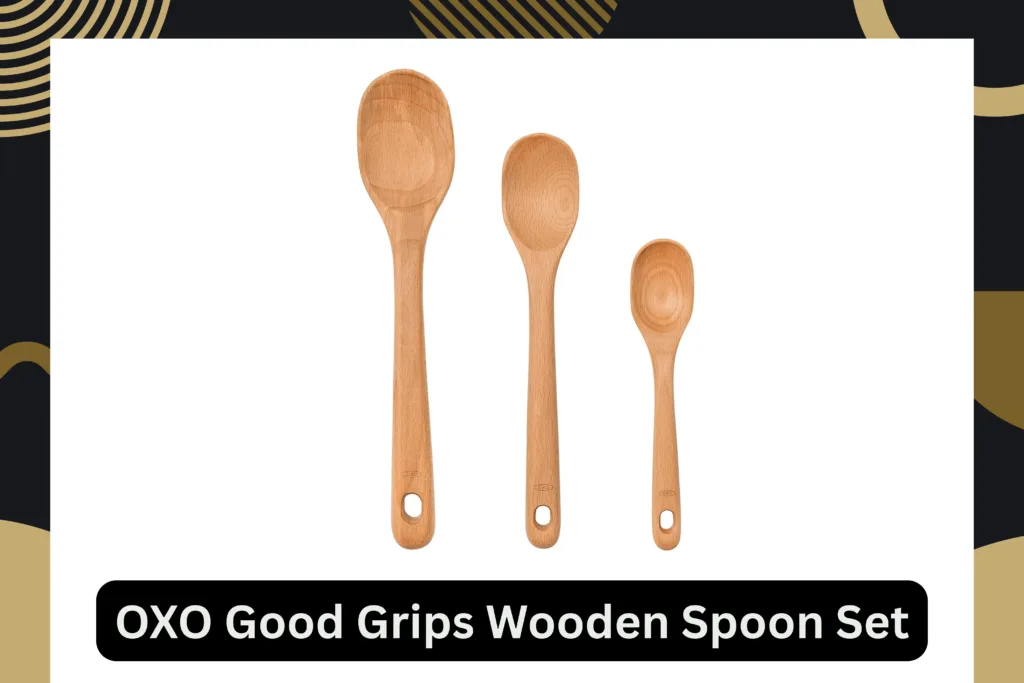
If you’re looking for a versatile and durable set that can handle almost anything in the kitchen, the OXO Good Grips Wooden Spoon Set is the one to beat. Made from natural beech wood, these spoons are built to last. Plus, they come with the OXO promise of ergonomic design. Their handles are smooth yet grippy, making them a dream to stir with for hours without straining your hand.
These spoons also feature a heat-resistant coating, meaning you won’t have to worry about them warping or cracking after repeated exposure to high cooking temperatures. Whether you’re stirring sauces or scraping the last bits of batter, this set is as functional as it is stylish.
2. Best for Eco-Conscious Cooks: Bamboozle Wooden Kitchen Tools
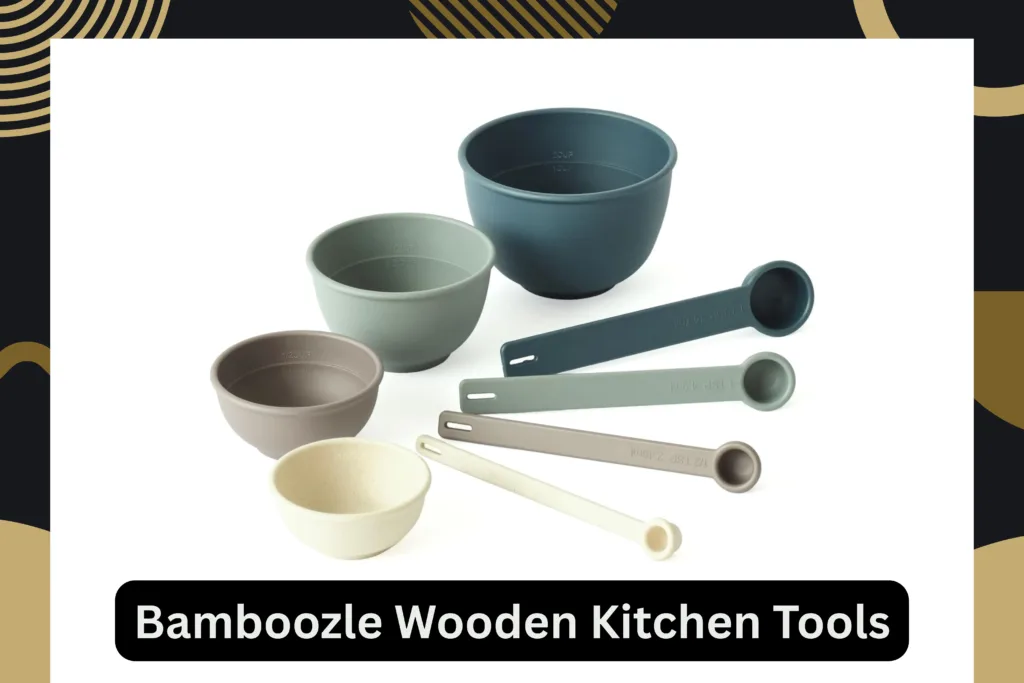
If sustainability is at the top of your list, Bamboozle Wooden Kitchen Tools are a must-have. Made from 100% organic bamboo, these utensils are lightweight, durable, and incredibly eco-friendly. Bamboo is one of the fastest-growing plants on the planet, so choosing these tools means you’re supporting a sustainable option while cutting down on plastic waste.
From spoons to spatulas, Bamboozle has everything you need for a fully eco-conscious kitchen setup. And don’t worry — even though bamboo is light, it’s still tough enough to handle all your cooking needs, from stirring and flipping to serving.
3. Best for Aesthetics: Fletchers’ Mill Acacia Wood Utensils
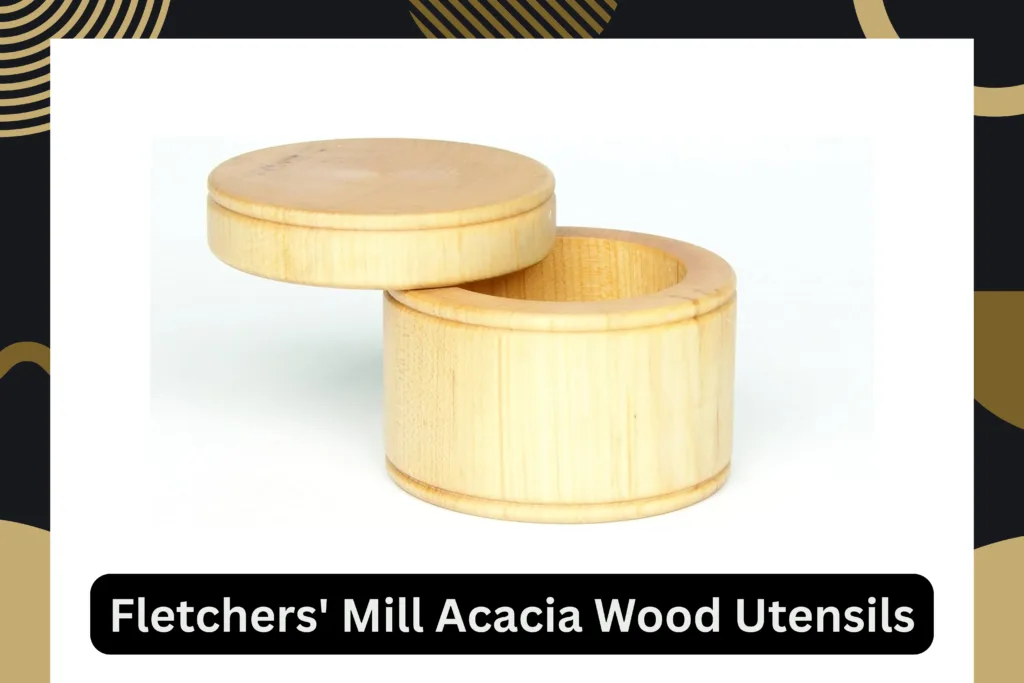
For anyone who’s a sucker for beautiful kitchen tools, you can’t go wrong with Fletchers’ Mill Acacia Wood Utensils. Acacia wood is known for its stunning, rich tones and unique grain patterns, which makes it a real showstopper in any kitchen.
The Fletchers’ Mill collection features spoons, spatulas, and ladles that not only feel great in your hand but also elevate the look of your kitchen. Their smooth texture is complemented by a durable, food-safe finish that keeps the utensils looking as good as new. These aren’t just tools; they’re pieces of art that you’ll want to display.
4. Best for Versatility: EcoTools Bamboo Serving Spoon
If you’re all about a multi-tasking utensil that can handle everything from serving to stirring, the EcoTools Bamboo Serving Spoon has you covered. With its extra-long handle, this spoon is ideal for reaching into deep pots or stirring large batches of food. It’s also made from 100% recycled bamboo, so you can rest easy knowing you’re contributing to a greener planet.
This spoon’s sleek design, paired with its strong yet lightweight build, makes it perfect for anything from salads to stir-fries, and everything in between. Plus, it’s dishwasher-safe for easy cleanup — just another reason it’s one of the most versatile tools you can own.
5. Best for Cooking at High Temperatures: Bamboozle Cooking Spoon
Need a wooden utensil that can stand up to high heat without warping or cracking? The Bamboozle Cooking Spoon is the answer. Made from heat-resistant bamboo, this spoon is perfect for stirring up stews, sauces, and any dish that requires a little extra heat tolerance.
Bamboozle’s unique eco-friendly design doesn’t just look great — it’s built to withstand the rigors of daily cooking, especially in high-heat situations. With its long-lasting durability, this cooking spoon will become your go-to for stirring your most intense meals without worrying about the material breaking down.
6. Best Wooden Spoon Set for Baking: Josie’s Handmade Wooden Spoons
For bakers, Josie’s Handmade Wooden Spoons are a dream. This set of three spoons is crafted from solid maple wood, known for its sturdiness and smooth texture. Ideal for mixing batters, folding dough, or even scraping icing, these spoons are built to handle all your baking needs without damaging your non-stick bakeware.
Maple is a popular choice in kitchens for a reason. It’s naturally resistant to moisture and scratches, making it the perfect option for baking enthusiasts who need dependable tools that can handle the heavy lifting in the kitchen.
With so many fantastic options available in 2025, choosing the right wooden utensils can be a game-changer in your kitchen. Whether you’re prioritizing eco-friendliness, style, or performance, there’s a perfect wooden tool waiting for you. The best part? These utensils not only perform beautifully but also help reduce your environmental impact.
Wood vs. Bamboo: Which is the Best Choice for Your Kitchen?
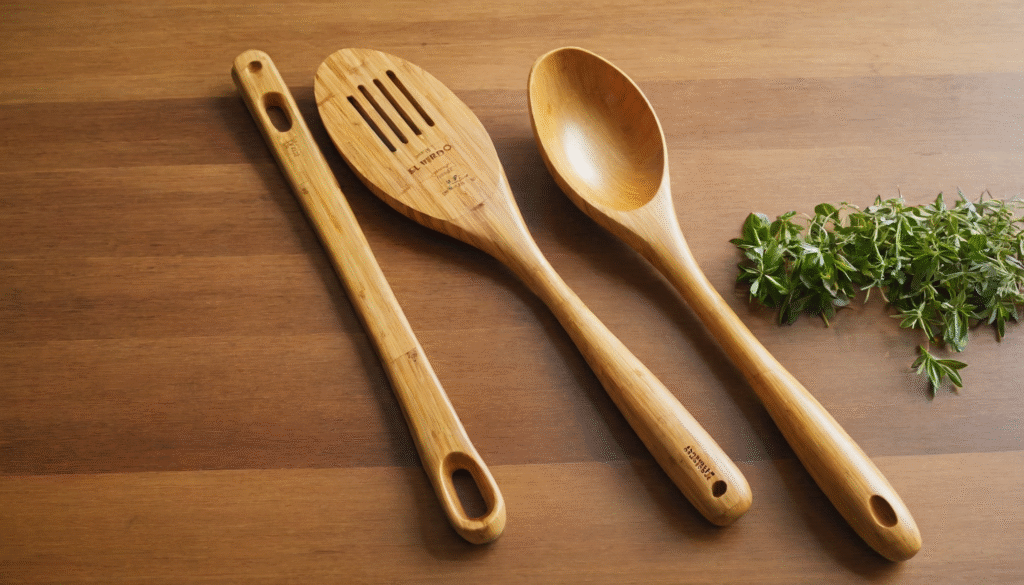
When it comes to choosing between wooden utensils and bamboo utensils, the decision often comes down to a few key factors: durability, sustainability, and cost. Let’s explore each in more detail to help you determine which material best suits your needs in 2025.
Durability
When we think of durability, both wood and bamboo are known for their sturdy nature, but there are subtle differences between the two.
- Wooden utensils, especially those made from hardwoods like maple, oak, or walnut, are extremely durable and often improve with age. The grain and texture of hardwoods make them incredibly resistant to cracks, splinters, or breakage, so they’ll last for years — or even generations — with the right care.
- On the other hand, bamboo is a grass, and while it’s naturally strong, it’s not quite as tough as hardwood. However, it is still a durable option for many cooking tasks. Bamboo utensils are lightweight, making them ideal for gentle stirring and tossing, but they may not hold up as well under high-stress cooking tasks (like heavy-duty flipping or scraping) over long periods of time.
So, if you’re after something that can handle tough cooking with minimal wear and tear, wood might be the better choice. But if you’re looking for a lightweight, eco-friendly alternative, bamboo is still a solid contender.
Sustainability
When it comes to being eco-friendly, both materials have their perks.
- Bamboo is often considered the more sustainable option because it’s a renewable resource that grows rapidly. It doesn’t require fertilizers or pesticides, and it can be harvested every few years without killing the plant. In fact, bamboo is one of the most sustainable materials on the planet, as it’s highly resistant to pests and requires little water to grow. So, if you’re focused on reducing your environmental footprint, bamboo might feel like the obvious choice.
- Wood, while also renewable, tends to have a larger environmental impact depending on how it’s sourced. Hardwoods, for example, take longer to grow and may require more land to cultivate. However, if you opt for certified sustainable wood (look for FSC certification), you can still find options that align with eco-friendly values.
Cost
When it comes to cost, bamboo tends to be the more budget-friendly option, thanks to its abundance and the fact that it’s cheaper to produce and harvest. Many bamboo utensils are available at a lower price point, which makes them attractive for those on a tight budget.
In contrast, wooden utensils — especially those crafted from premium hardwoods — tend to come with a higher price tag. If you’re purchasing a set made from quality maple or walnut, expect to pay more upfront. However, because of their durability, these utensils are likely to outlast bamboo, making them a long-term investment.
Which One Should You Choose?
The best material for you ultimately depends on your cooking habits and what you value most.
- If you’re looking for durability and plan on using your utensils regularly for heavy-duty cooking, wood might be your best bet.
- If you’re more concerned about sustainability and budget, bamboo offers a fantastic alternative without sacrificing too much performance.
- For a mix of both, you might even want to consider a combination of the two — many sets offer both wooden spoons and bamboo spatulas, giving you the best of both worlds!
Care & Maintenance Tips to Make Them Last
Wooden kitchen utensils are an investment — and like any good investment, they need a little attention to help them perform at their best. Fortunately, maintaining your wooden utensils isn’t as complicated as it sounds. With the right care, your spoons, spatulas, and ladles can last for years (maybe even decades!). Here’s how to keep them in prime condition:
How to Clean (No Dishwasher!)
Let’s get one thing straight: Wooden utensils should never go in the dishwasher. The high heat, harsh detergents, and moisture can warp, crack, and cause irreversible damage. So, what should you do instead?
The good news is that cleaning your wooden utensils is quick and easy. Here’s a simple routine:
- Rinse right after use – As soon as you’re done cooking, rinse your wooden utensils with warm water. The longer food sits on them, the harder it is to clean, so try to give them a quick wash.
- Use a mild soap – If there’s stubborn food stuck on, use a small amount of mild dish soap and a sponge to gently scrub. Avoid harsh abrasives, which can scratch the wood.
- Dry immediately – After washing, dry your utensils with a clean towel as soon as possible. Wood absorbs moisture, and leaving your utensils wet for too long can cause them to swell and split.
Conditioning with Mineral Oil or Beeswax
Now, here’s the secret to making your wooden utensils look and feel brand new again: conditioning. Wood is naturally porous, which means it can dry out over time, leading to cracks and splits. To keep your utensils from drying out, oil them regularly.
- Mineral oil is the most popular choice because it’s food-safe and won’t go rancid like some other oils (like olive oil or vegetable oil). You can also use beeswax for a more natural finish.
- To condition your utensils, simply apply a small amount of oil to a clean cloth and rub it into the wood. Make sure to cover all surfaces, then let it sit for about 30 minutes. After that, wipe off any excess oil to avoid it feeling greasy.
Conditioning every few weeks or after heavy use will help maintain the wood’s natural beauty and prevent it from drying out.
What Not to Do: Soaking, Harsh Scrubbing, Storing Wet
When caring for your wooden utensils, there are a few things to avoid in order to keep them in tip-top shape:
- Don’t soak them: Wooden utensils are not fans of water for extended periods. Soaking them can cause the wood to absorb too much moisture, which can lead to warping or cracking. Always rinse and dry them immediately after use.
- Avoid harsh scrubbing: Using steel wool or hard brushes can scratch and dull the surface of the wood. Stick to a soft sponge or cloth to clean your utensils and keep them looking smooth and shiny.
- No storing them wet: Storing your utensils while they’re still wet can cause them to absorb moisture, which might lead to mold growth or cracking. Ensure your utensils are completely dry before storing them in a drawer or holder.
Are Wooden Utensils Safe and Sanitary?
There’s a bit of myth-busting to do when it comes to wooden kitchen utensils. Some people have concerns about whether they’re sanitary enough, or if wooden spoons and spatulas can actually harbor bacteria. We’re here to clear that up and explain why chefs and home cooks alike still love wooden utensils.
Myths vs. Facts
One common myth is that wooden utensils can harbor bacteria because they have pores. While it’s true that wood is porous, that doesn’t mean it’s a breeding ground for germs. Here’s why:
- Wood is naturally antimicrobial: Certain types of wood, like maple and cherry, actually have natural properties that help resist bacterial growth. They’re not the petri dish some might believe.
- Proper cleaning: As long as you’re cleaning your utensils after every use (and not leaving them to sit with food on them), there’s really little risk of bacteria building up. The key is keeping your utensils dry and clean.
Of course, if you ever notice your utensils looking cracked or if there’s food stuck in the grooves, it’s a good idea to replace them. But with proper care, wooden utensils are as sanitary as any other kitchen tool.
Why Chefs Still Use Them
So, why do professional chefs swear by wooden utensils? It’s because they check all the boxes when it comes to functionality and safety. Here’s why chefs love them:
- Gentle on cookware: Wooden spoons and spatulas won’t scratch up your non-stick pans or cast iron skillets. That means you can stir and sauté without worrying about damaging your expensive pots and pans.
- Non-reactive: Unlike metal utensils, wooden ones don’t react with acidic foods like tomatoes or vinegar, which can change the flavor of your dish. With wood, what you taste is what you get.
- Heat-resistant: Wooden utensils don’t get as hot as metal ones, so you won’t burn your hands during cooking. They stay cool to the touch, even when stirring hot liquids.
- Durability: Wood is incredibly durable, especially if it’s well-maintained. A high-quality wooden spoon can outlast a plastic or metal one by years.
FDA & Health Considerations
In terms of safety, there’s a growing consensus that wooden utensils are perfectly safe to use in cooking. The FDA (U.S. Food and Drug Administration) doesn’t prohibit the use of wooden utensils in food preparation. In fact, they acknowledge that wood is commonly used in food handling due to its non-toxic nature.
However, the key to safety is proper maintenance. If you allow your wooden utensils to get too old or worn out, cracks and crevices can collect food particles. That’s why regular conditioning and proper cleaning are so important — they help maintain the integrity of the utensil and keep it safe for everyday use.
Matching Style and Function: Sets That Look Amazing on Your Counter
Let’s face it — wooden utensils aren’t just about function. They’re about style, too. There’s something inherently charming about a well-crafted wooden spoon or spatula. And when you pair that with a stylish set that complements your kitchen decor, you’re not just cooking — you’re making a statement.
So, how do you find that perfect blend of beauty and utility? Here’s a breakdown of some of the most gorgeous and functional wooden utensil sets out there. Whether you’re outfitting your own kitchen or looking for a gift for a foodie, you can’t go wrong with these stunning options.
Best Design-Forward Sets (For Gifting or Aesthetic Appeal)
When it comes to a design-forward set of wooden utensils, there are so many options that combine form with function. Think about it — a beautifully crafted set of wooden spoons doesn’t just do the job, it elevates your kitchen’s aesthetic.
- Elegant Minimalism: If you’re drawn to clean lines and a minimalist look, sets that feature sleek maple or light oak handles will give your kitchen a modern, uncluttered vibe. These neutral-toned sets are versatile and blend seamlessly into almost any kitchen decor.
- Rustic Charm: On the other hand, if you’re going for a more rustic farmhouse feel, look for sets that feature dark woods like walnut or teak. These offer a deep, rich look that adds a touch of coziness to your kitchen counter.
- Colorful Accents: For those who like a pop of color, there are sets that combine wood with a vibrant handle or include hand-painted designs. These can serve as both functional tools and decorative accents.
Many sets even come in matching canisters or utensil holders, so you can display them right on your counter. Not only do these sets keep your utensils within easy reach, but they also turn into a conversation starter when guests are over.
Wall-Mounted Holders, Utensil Crocks, and More
If you’re short on drawer space or just want to show off your beautiful utensils, there are plenty of clever storage solutions. For example, wall-mounted holders let you keep your utensils visible and easily accessible while keeping your counters clutter-free. Plus, they add a sleek, industrial feel to your kitchen that’s perfect for modern spaces.
Alternatively, a utensil crock — the ceramic or wood jar that sits on the counter — can become a charming, rustic addition to your kitchen. Not only is it practical for storing your spoons, spatulas, and ladles, but it also serves as an attractive centerpiece in the cooking space.
If you’re someone who loves to entertain, these storage options double as statement pieces that will impress guests and elevate the ambiance of your kitchen.
Sustainability and Design Go Hand in Hand
Another thing to consider when shopping for a wooden utensil set is sustainability. As we all become more eco-conscious, the demand for sustainably sourced wood has risen, and it’s easy to find utensils made from certified sustainable woods. Brands are now putting just as much thought into eco-friendly sourcing as they are into the design of the utensils themselves.
When choosing a set, look for one that is crafted from FSC-certified wood (Forest Stewardship Council) or wood sourced from sustainable forests. Not only will you be contributing to a more sustainable world, but you’ll also be adding pieces to your kitchen that you can feel good about.
The Future of Wooden Utensils: What’s Trending in 2025?
As we enter 2025, it’s clear that wooden utensils are far from being just a kitchen classic. They’re evolving, with innovative designs, eco-friendly trends, and smart integrations that are shaking up how we think about these everyday tools. If you’ve been following the latest kitchen trends, you know that wooden utensils are not going out of style anytime soon. So, what’s next for these timeless kitchen companions?
Smart Design Integrations: The Marriage of Function and Innovation
One exciting trend on the horizon is the integration of smart design into wooden utensils. While it might sound like something out of a sci-fi kitchen, hear us out. Some brands are experimenting with magnetic bases that allow your spoons, spatulas, and other utensils to stay neatly organized and easily accessible. Imagine a wooden spoon that attaches to your utensil holder with a magnetic touch — no more searching through drawers to find the right one.
Another ergonomic shaping trend is making wooden utensils not only beautiful but also more comfortable to use. Think about utensils with curved handles or smooth edges designed to fit perfectly in your hand. These little tweaks are all about improving the user experience without sacrificing style.
Sustainable Packaging: Small Changes, Big Impact
As the world moves toward more sustainable living, even the packaging for wooden utensils is getting a makeover. Instead of single-use plastic or wasteful boxes, more and more companies are shifting toward eco-friendly packaging. Whether it’s using recycled materials, compostable wraps, or even plant-based inks, this shift is one more step toward a more eco-conscious future for our kitchens.
It’s a win-win for the environment and for consumers who are looking to make greener choices. As we become more mindful of our impact on the planet, these small shifts in packaging make a huge difference over time.
Artisan Handmade vs. Factory-Made: What’s the Difference?
There’s an ongoing debate between the appeal of artisan-made wooden utensils versus those produced in a factory. Both options have their merits, but as 2025 rolls in, the artisan trend is gaining some serious momentum.
- Handmade wooden utensils are crafted with care, often from unique, locally sourced wood, and they tend to be one-of-a-kind. These utensils often come with a story behind them, making them special and perfect for those who enjoy supporting independent artisans and purchasing thoughtfully crafted pieces.
- On the other hand, factory-made utensils are often more affordable, uniform in design, and come in larger quantities, making them a good choice for anyone looking to fill their kitchen with wooden tools without breaking the bank.
If you’re someone who values craftsmanship, you might lean toward the handmade options. But if you’re after something more practical for day-to-day use, the factory-made utensils can be a great pick — plus, they often come with modern innovations like those magnetic bases or ergonomic handles.
What’s Next for Wooden Utensils in 2025?
Looking ahead, we’re likely to see even more hybrid designs combining wood with other materials like silicone or stainless steel. These hybrid utensils offer the best of both worlds, with wood’s classic look and feel paired with the durability and heat resistance of silicone or metal.
Expect to see even more customized options, too — utensils that can be personalized with your initials or special engravings. Whether you’re treating yourself or gifting them to someone else, these personalized pieces add a special touch to any kitchen.
All in all, wooden utensils aren’t just a nostalgic throwback; they’re continuing to evolve, bringing both sustainability and innovation to your kitchen in 2025 and beyond.
Final Verdict: Our Top Picks Based on Use Case
Alright, we’ve explored the beauty, the functionality, and the trends that make wooden utensils such a popular choice for kitchens around the world. But when it comes down to it, the right set for you depends on how you plan to use them. After all, not every cook is the same, and not every kitchen has the same needs. So, let’s break down the top picks based on different use cases to help you find the perfect set for your kitchen.
Best for Beginner Cooks: Simple, Budget-Friendly, and Easy to Maintain
If you’re just getting started in the kitchen and want a reliable set that won’t break the bank, go for a basic, sturdy wooden utensil set. These usually come with a spoon, spatula, and sometimes a slotted spoon or turner. Look for something with smooth finishes and an affordable price point.
A set like this is ideal for those who aren’t ready to spend too much yet still want the quality and versatility that wooden utensils offer. They’re also easy to care for, which is great when you’re just learning how to keep your kitchen tools in tip-top shape.
Best for Aesthetics: A Beautiful Set to Elevate Your Kitchen Style
For those of you who love the idea of your kitchen utensils doubling as decor, there are plenty of stunning, high-end wooden utensil sets to consider. Think about investing in a set crafted from rich walnut or teak, paired with a sleek, elegant design. These utensils don’t just function well — they’re showstoppers.
Whether you’re setting up a rustic kitchen or aiming for something more modern and sleek, these sets will fit perfectly into any style. They’re ideal if you care as much about how your utensils look on your counter as how they perform in the pan.
Best All-Around Daily Use: Durable, Versatile, and Practical
Now, if you’re someone who uses wooden utensils on a daily basis for everything from stirring sauces to flipping pancakes, you’ll want a set that’s both durable and versatile. A great choice here would be a set made from maple or beechwood, which are known for being strong enough to handle regular use but gentle enough to avoid damaging your cookware.
Look for a set that includes all the essentials: spoons, turners, ladles, and tongs. These multitaskers will make sure you’ve got the right tool for every cooking job without overwhelming you with too many options.
Best Gift-Worthy Set: Thoughtful, Unique, and Eco-Friendly
If you’re searching for a gift for someone who’s into cooking or loves to host dinner parties, you can’t go wrong with a premium wooden utensil set. Opt for one that comes with a matching holder or is packaged in a beautiful wooden box. You could even find sets that come with unique touches like engraving or personalization, making them even more special.
These sets are perfect for anyone who wants to add a bit of personality to their kitchen. Plus, with the growing interest in sustainable living, they’ll appreciate the eco-friendly choice, which adds an extra layer of thoughtfulness to your gift.
Best for Compact Kitchens: Space-Saving and Efficient
Not everyone has a spacious kitchen, and if you’re working with a smaller space, you’ll want utensils that are efficient and space-saving. Look for compact sets or even magnetic utensils that can be stored neatly without taking up too much space. A wall-mounted holder or even a small countertop crock can help keep things organized without cluttering your workspace.
These sets don’t just help you cook efficiently — they’ll also make sure your kitchen looks neat and tidy, even if you don’t have a ton of counter space to spare.
Conclusion: The Natural Choice for a Modern Kitchen
As we move further into 2025, wooden kitchen utensils continue to reign supreme. With their combination of durability, style, and sustainability, they remain a timeless addition to any home. If you’re looking to elevate your cooking experience while doing your part for the planet, there’s no better choice than wooden utensils. Check out our top picks and add these eco-friendly essentials to your kitchen today!
FAQ
Can I Use Wooden Utensils with Cast Iron?
Yes, wooden utensils are perfect for cast iron cookware because they won’t scratch or damage the seasoning.
How Often Should I Oil Wooden Utensils?
About once every 1-2 months should do the trick, or when they start looking dry or worn.
Will Wooden Utensils Crack or Mold Over Time?
If you avoid soaking them and dry them well, cracking and mold are unlikely to be an issue.
Can Wooden Utensils Hold Up to High Heat?
They handle heat well, staying cool even on a hot stove, but avoid leaving them in direct heat for too long.
Are Wooden Utensils Safe for Nonstick Cookware?
Yes, they’re safe for nonstick pans since they won’t scratch or damage the coating.



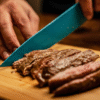

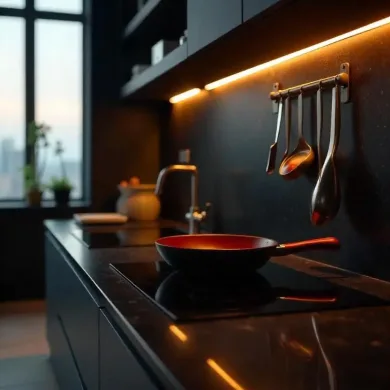
Add comment